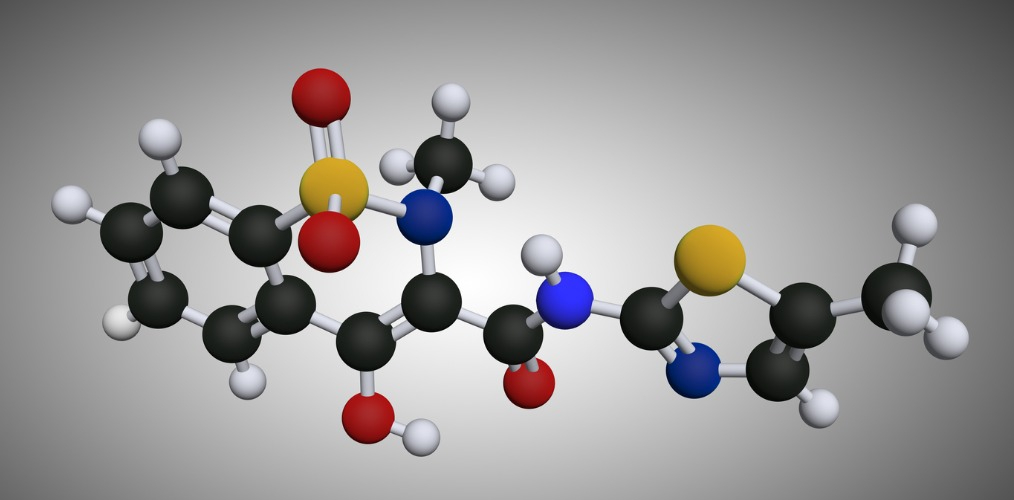The Effects of NSAIDs on Muscle Adaption to Exercise

Many different factors affect muscle adaptation to exercise. Non-steroid anti-inflammatory drugs (NSAIDs) – which exert their activity by inhibiting the cyclooxygenase (COX) pathway – are of particular interest in this context as they are routinely administered to relieve symptoms associated with delayed onset muscle soreness and are used by some to help restore normal physical function following intense physical activity. However, some data suggests that NSAIDs may have negative effects on the ability of muscle to adapt.
In light of the involvement of the COX pathway in the regulation of muscle protein turnover and muscle mass in humans, reducing COX-1 and COX-2-related prostanoid inflammation by NSAID administration would be expected to theoretically alleviate post-exercise pain and edema 1. However, research results have remained unclear on whether, and if so how, over-the-counter NSAIDs interfere with the effects of muscle adaptation to exercise 2.
One study found that over-the-counter doses of acetaminophen or ibuprofen, when consumed alongside resistance training, enhanced muscle hypertrophy and strength gains in older adults 3. Specifically, the daily consumption of a COX inhibitor during a 12-week resistance training program resulted in an ∼25–50% greater increase in muscle mass and strength.
In contrast, a more recent study found that, in older adults, taking NSAIDs either 2 hours prior to or immediately following exercise sessions did not significantly change the effects on bone mineral density or fat-free mass of a 36-week exercise training program 4. In young individuals, another study showed that ibuprofen did not alter muscle development following 6 weeks of resistance exercise 5. This was corroborated by a later study demonstrating that 8 weeks of resistance training with co-ingestion of anti-inflammatory drugs increased mitochondrial content (but reduced mitochondrial function) only in a manner unrelated to the consumption of NSAIDs 6.
However, a recent 2018 study revealed that high doses of anti‐inflammatory drugs compromised muscle strength and hypertrophic adaptations to resistance training in an 8-week program in young adults 7. The research team concluded that young individuals using resistance training to maximize muscle growth or strength should avoid excessively consuming anti-inflammatory drugs.
Additional research is needed to shed light on the processes regulating muscle development and galvanize the development of new therapies for musculoskeletal wasting conditions such as cachexia and sarcopenia. In particular, since COX-1 may be linked to the anabolic response to exercise and COX-2 to muscle injury, and since ibuprofen is a non-selective COX inhibitor, future work may seek to assess whether a selective COX inhibitory drug may provide optimal benefits in the context of muscle adaptation to exercise. This is particular relevant to young athletes who partake in rigorous exercise and are known to use NSAIDs on a very regular basis 8.
For physical therapists, it is important to remain informed about both the constructive and detrimental effects of NSAIDs on different bodily systems and across different age groups. A physical therapist should ask whether their patients are taking any NSAIDs such as to be able to best inform them about their safe and optimal use 9.
Overall, the widespread use of NSAIDs, coupled with the essential role of exercise in maintaining health, underscore the need for further research to understand how NSAIDs influence the effects of exercise on muscle and bone.
References
1. Connolly, D. A. J., Sayers, S. P. & McHugh, M. P. Treatment and prevention of delayed onset muscle soreness. Journal of Strength and Conditioning Research (2003). doi:10.1519/1533-4287(2003)017<0197:TAPODO>2.0.CO;2. https://pubmed.ncbi.nlm.nih.gov/12580677/
2. Schoenfeld, B. J. The use of nonsteroidal anti-inflammatory drugs for exercise-induced muscle damage: Implications for skeletal muscle development. Sports Medicine (2012). doi:10.2165/11635190-000000000-00000
3. Trappe, T. A. et al. Influence of acetaminophen and ibuprofen on skeletal muscle adaptations to resistance exercise in older adults. Am. J. Physiol. – Regul. Integr. Comp. Physiol. (2011). doi:10.1152/ajpregu.00611.2010
4. Jankowski, C. M. et al. Timing of ibuprofen use and musculoskeletal adaptations to exercise training in older adults. Bone Reports 1, 1–8 (2015). doi:10.1016/j.bonr.2014.10.003
5. Krentz, J. R., Quest, B., Farthing, J. P., Quest, D. W. & Chilibeck, P. D. The effects of ibuprofen on muscle hypertrophy, strength, and soreness during resistance training. Appl. Physiol. Nutr. Metab. (2008). doi:10.1139/H08-019
6. Cardinale, D. A. et al. Resistance training with co-ingestion of anti-inflammatory drugs attenuates mitochondrial function. Front. Physiol. (2017). doi:10.3389/fphys.2017.01074
7. Lilja, M. et al. High doses of anti-inflammatory drugs compromise muscle strength and hypertrophic adaptations to resistance training in young adults. Acta Physiol. (2018). doi:10.1111/apha.12948
8. Warner, D. C., Schnepf, G., Barrett, M. S., Dian, D. & Swigonski, N. L. Prevalence, attitudes, and behaviors related to the use of nonsteroidal anti-inflammatory drugs (NSAIDs) in student athletes. J. Adolesc. Heal. (2002). doi:10.1016/S1054-139X(01)00325-1
9. The Influence of NSAIDs on Physiologic Processes and Exercise – Physiopedia. Available at: https://www.physio-pedia.com/The_Influence_of_NSAIDs_on_Physiologic_Processes_and_Exercise.
